Zexi Huang
School of Electronic and Information Engineering, South China University of Technology
Attribute-Enhanced Similarity Ranking for Sparse Link Prediction
Nov 29, 2024



Abstract:Link prediction is a fundamental problem in graph data. In its most realistic setting, the problem consists of predicting missing or future links between random pairs of nodes from the set of disconnected pairs. Graph Neural Networks (GNNs) have become the predominant framework for link prediction. GNN-based methods treat link prediction as a binary classification problem and handle the extreme class imbalance -- real graphs are very sparse -- by sampling (uniformly at random) a balanced number of disconnected pairs not only for training but also for evaluation. However, we show that the reported performance of GNNs for link prediction in the balanced setting does not translate to the more realistic imbalanced setting and that simpler topology-based approaches are often better at handling sparsity. These findings motivate Gelato, a similarity-based link-prediction method that applies (1) graph learning based on node attributes to enhance a topological heuristic, (2) a ranking loss for addressing class imbalance, and (3) a negative sampling scheme that efficiently selects hard training pairs via graph partitioning. Experiments show that Gelato outperforms existing GNN-based alternatives.
DGCLUSTER: A Neural Framework for Attributed Graph Clustering via Modularity Maximization
Dec 20, 2023



Abstract:Graph clustering is a fundamental and challenging task in the field of graph mining where the objective is to group the nodes into clusters taking into consideration the topology of the graph. It has several applications in diverse domains spanning social network analysis, recommender systems, computer vision, and bioinformatics. In this work, we propose a novel method, DGCluster, which primarily optimizes the modularity objective using graph neural networks and scales linearly with the graph size. Our method does not require the number of clusters to be specified as a part of the input and can also leverage the availability of auxiliary node level information. We extensively test DGCluster on several real-world datasets of varying sizes, across multiple popular cluster quality metrics. Our approach consistently outperforms the state-of-the-art methods, demonstrating significant performance gains in almost all settings.
Link Prediction without Graph Neural Networks
May 23, 2023Abstract:Link prediction, which consists of predicting edges based on graph features, is a fundamental task in many graph applications. As for several related problems, Graph Neural Networks (GNNs), which are based on an attribute-centric message-passing paradigm, have become the predominant framework for link prediction. GNNs have consistently outperformed traditional topology-based heuristics, but what contributes to their performance? Are there simpler approaches that achieve comparable or better results? To answer these questions, we first identify important limitations in how GNN-based link prediction methods handle the intrinsic class imbalance of the problem -- due to the graph sparsity -- in their training and evaluation. Moreover, we propose Gelato, a novel topology-centric framework that applies a topological heuristic to a graph enhanced by attribute information via graph learning. Our model is trained end-to-end with an N-pair loss on an unbiased training set to address class imbalance. Experiments show that Gelato is 145% more accurate, trains 11 times faster, infers 6,000 times faster, and has less than half of the trainable parameters compared to state-of-the-art GNNs for link prediction.
Graph Neural Diffusion Networks for Semi-supervised Learning
Jan 24, 2022
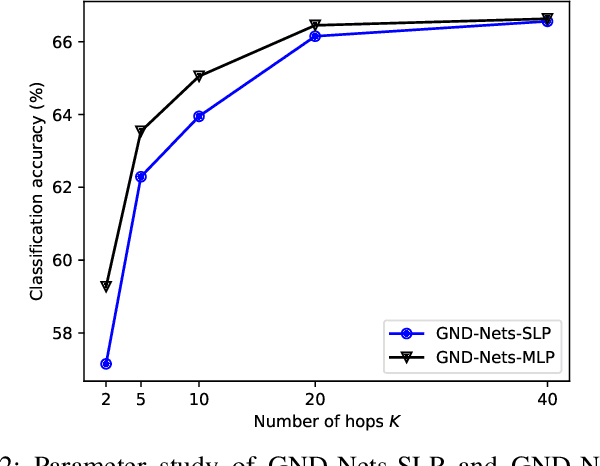
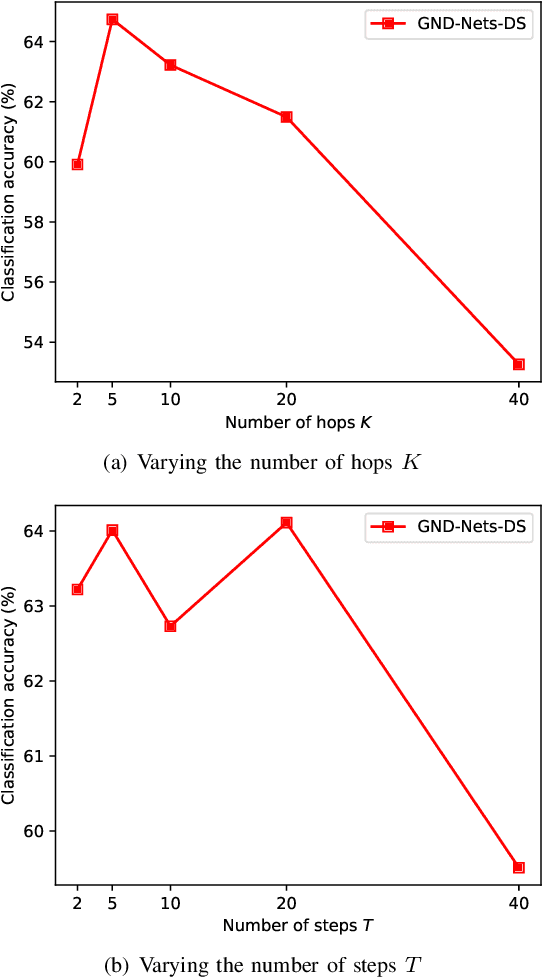
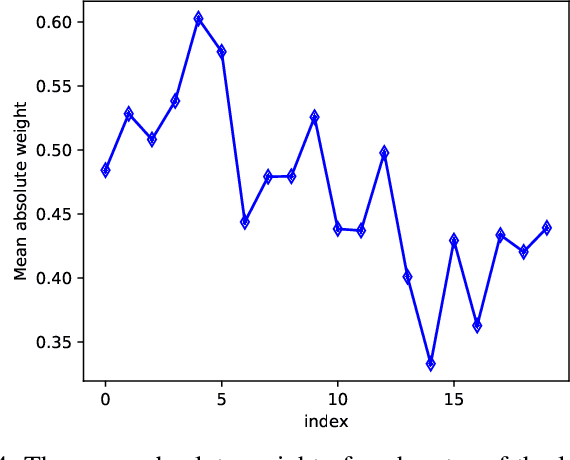
Abstract:Graph Convolutional Networks (GCN) is a pioneering model for graph-based semi-supervised learning. However, GCN does not perform well on sparsely-labeled graphs. Its two-layer version cannot effectively propagate the label information to the whole graph structure (i.e., the under-smoothing problem) while its deep version over-smoothens and is hard to train (i.e., the over-smoothing problem). To solve these two issues, we propose a new graph neural network called GND-Nets (for Graph Neural Diffusion Networks) that exploits the local and global neighborhood information of a vertex in a single layer. Exploiting the shallow network mitigates the over-smoothing problem while exploiting the local and global neighborhood information mitigates the under-smoothing problem. The utilization of the local and global neighborhood information of a vertex is achieved by a new graph diffusion method called neural diffusions, which integrate neural networks into the conventional linear and nonlinear graph diffusions. The adoption of neural networks makes neural diffusions adaptable to different datasets. Extensive experiments on various sparsely-labeled graphs verify the effectiveness and efficiency of GND-Nets compared to state-of-the-art approaches.
SECP-Net: SE-Connection Pyramid Network of Organ At Risk Segmentation for Nasopharyngeal Carcinoma
Dec 28, 2021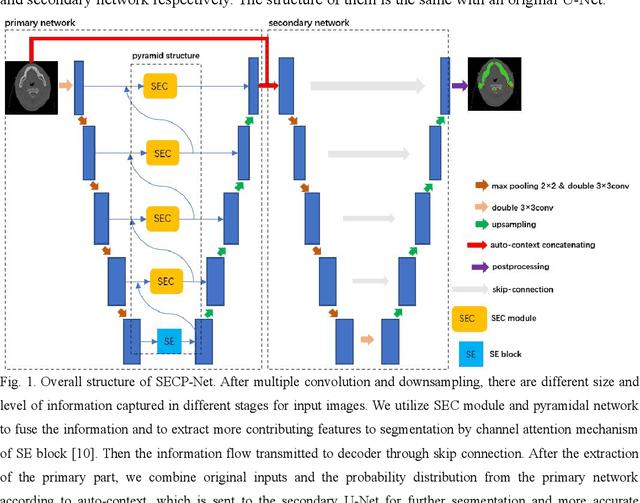
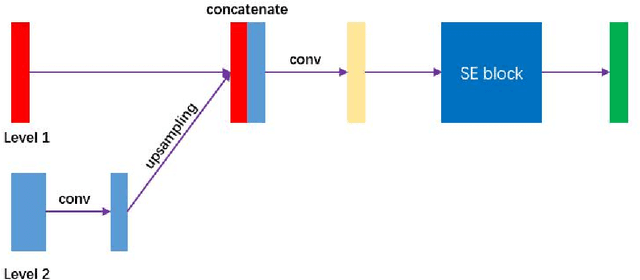
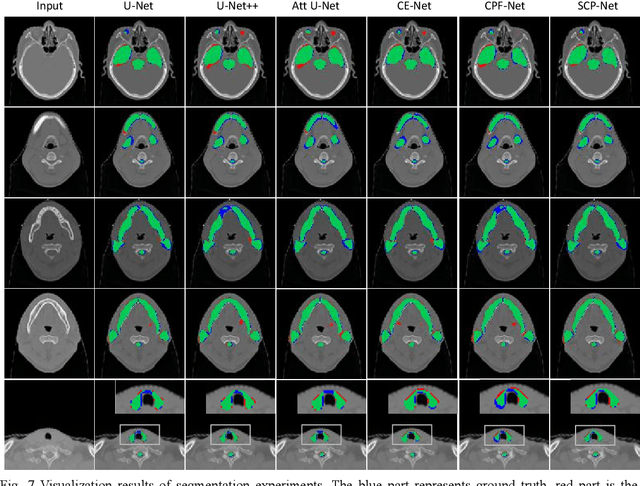
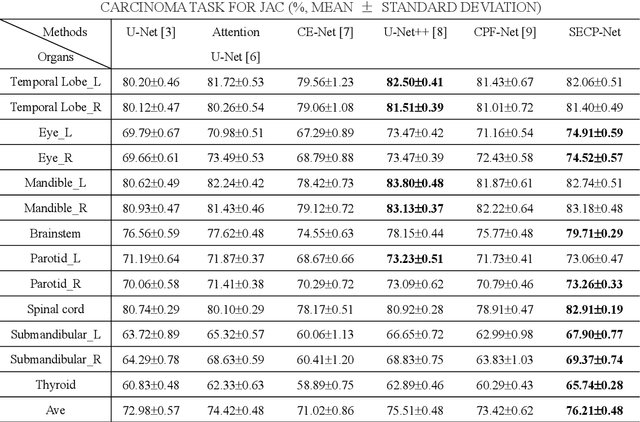
Abstract:Nasopharyngeal carcinoma (NPC) is a kind of malignant tumor. Accurate and automatic segmentation of organs at risk (OAR) of computed tomography (CT) images is clinically significant. In recent years, deep learning models represented by U-Net have been widely applied in medical image segmentation tasks, which can help doctors with reduction of workload and get accurate results more quickly. In OAR segmentation of NPC, the sizes of OAR are variable, especially, some of them are small. Traditional deep neural networks underperform during segmentation due to the lack use of global and multi-size information. This paper proposes a new SE-Connection Pyramid Network (SECP-Net). SECP-Net extracts global and multi-size information flow with se connection (SEC) modules and a pyramid structure of network for improving the segmentation performance, especially that of small organs. SECP-Net also designs an auto-context cascaded network to further improve the segmentation performance. Comparative experiments are conducted between SECP-Net and other recently methods on a dataset with CT images of head and neck. Five-fold cross validation is used to evaluate the performance based on two metrics, i.e., Dice and Jaccard similarity. Experimental results show that SECP-Net can achieve SOTA performance in this challenging task.
A Broader Picture of Random-walk Based Graph Embedding
Oct 24, 2021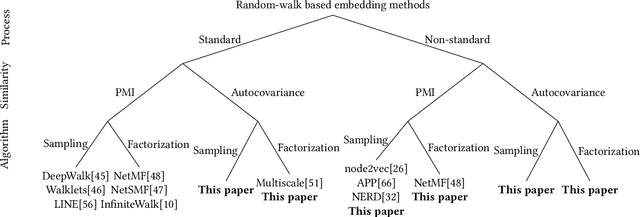
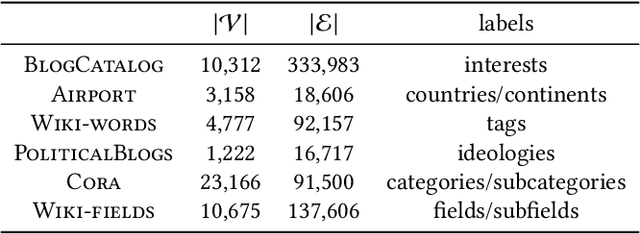
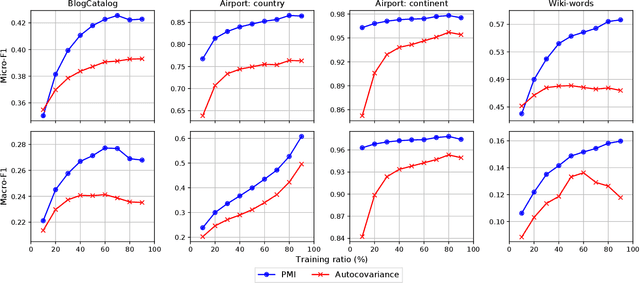

Abstract:Graph embedding based on random-walks supports effective solutions for many graph-related downstream tasks. However, the abundance of embedding literature has made it increasingly difficult to compare existing methods and to identify opportunities to advance the state-of-the-art. Meanwhile, existing work has left several fundamental questions -- such as how embeddings capture different structural scales and how they should be applied for effective link prediction -- unanswered. This paper addresses these challenges with an analytical framework for random-walk based graph embedding that consists of three components: a random-walk process, a similarity function, and an embedding algorithm. Our framework not only categorizes many existing approaches but naturally motivates new ones. With it, we illustrate novel ways to incorporate embeddings at multiple scales to improve downstream task performance. We also show that embeddings based on autocovariance similarity, when paired with dot product ranking for link prediction, outperform state-of-the-art methods based on Pointwise Mutual Information similarity by up to 100%.
POLE: Polarized Embedding for Signed Networks
Oct 20, 2021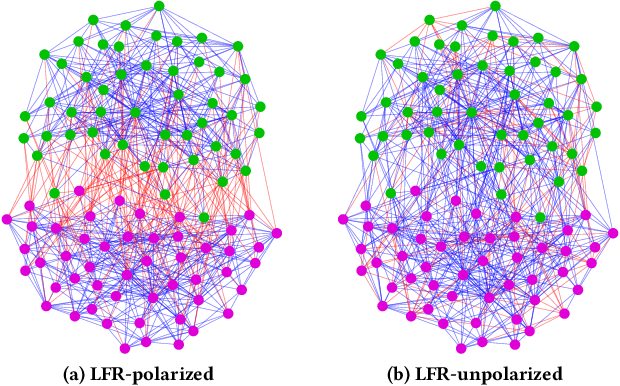
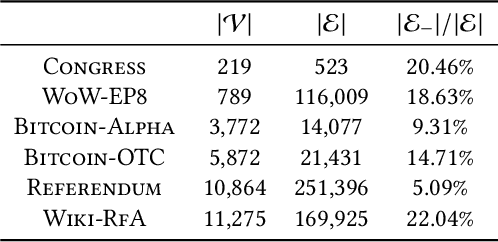
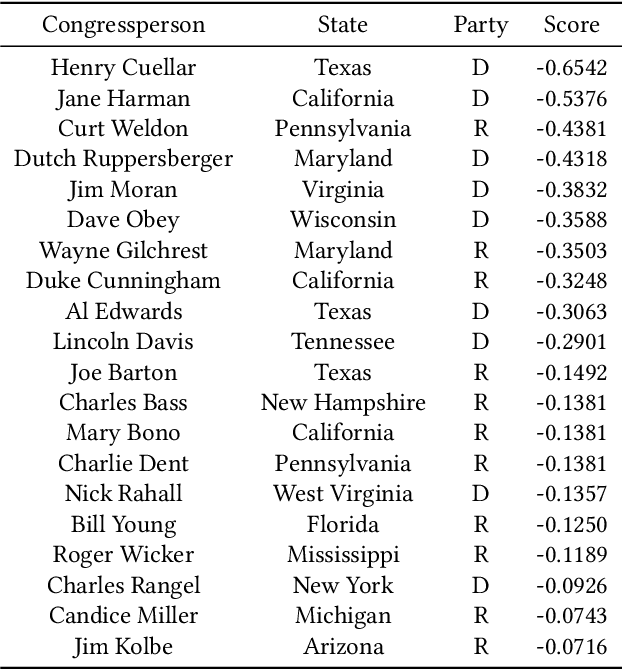
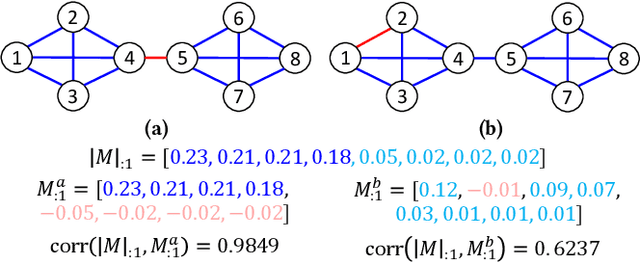
Abstract:From the 2016 U.S. presidential election to the 2021 Capitol riots to the spread of misinformation related to COVID-19, many have blamed social media for today's deeply divided society. Recent advances in machine learning for signed networks hold the promise to guide small interventions with the goal of reducing polarization in social media. However, existing models are especially ineffective in predicting conflicts (or negative links) among users. This is due to a strong correlation between link signs and the network structure, where negative links between polarized communities are too sparse to be predicted even by state-of-the-art approaches. To address this problem, we first design a partition-agnostic polarization measure for signed graphs based on the signed random-walk and show that many real-world graphs are highly polarized. Then, we propose POLE (POLarized Embedding for signed networks), a signed embedding method for polarized graphs that captures both topological and signed similarities jointly via signed autocovariance. Through extensive experiments, we show that POLE significantly outperforms state-of-the-art methods in signed link prediction, particularly for negative links with gains of up to one order of magnitude.
 Add to Chrome
Add to Chrome Add to Firefox
Add to Firefox Add to Edge
Add to Edge